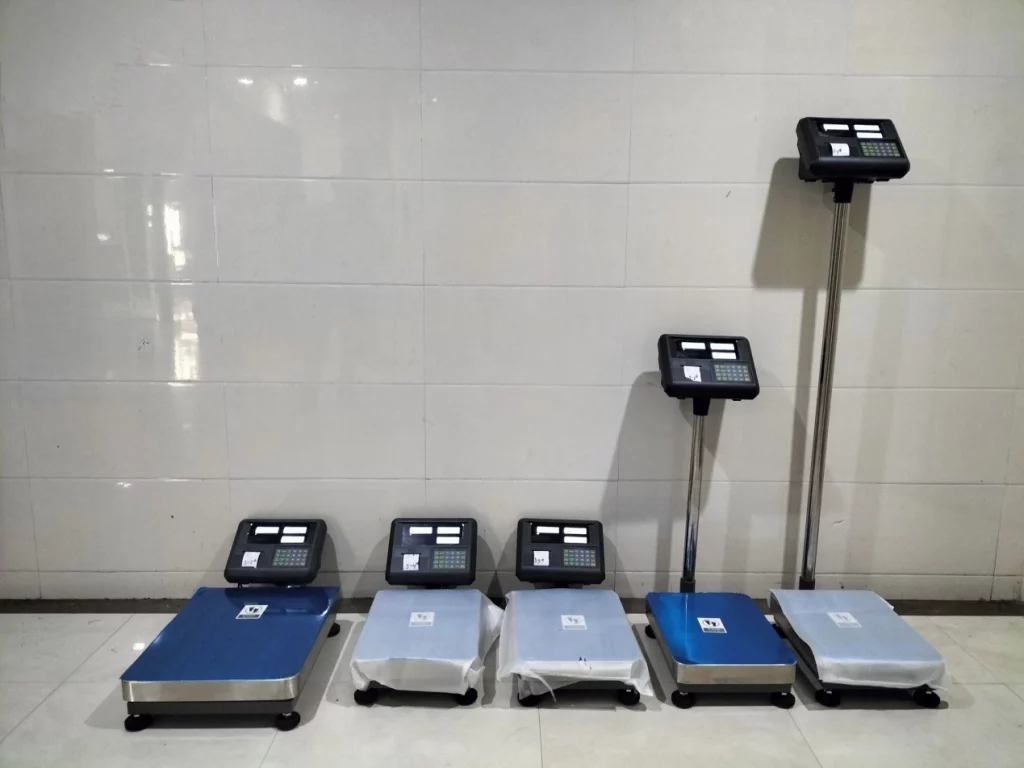An electronic weighing machine, also known as a digital scale, is a device used to measure the weight of an object. It converts the force exerted by the object into an electronic signal, which is then displayed on a digital display.

Electronic weighing machines use a variety of technologies to measure weight, including strain gauge load cells, hydraulic load cells, and piezoelectric load cells. The most common type of electronic weighing machine uses strain gauge load cells, which consist of a metal beam with strain gauges attached to it. When a weight is placed on the beam, it bends and the strain gauges measure the amount of deformation. This information is then converted into an electronic signal and displayed on the digital display.
One of the main advantages of electronic weighing machines is their high level of accuracy. They are able to measure weight to a much higher degree of precision than mechanical scales, which use a spring or other mechanical mechanism to measure weight. Electronic weighing machines are also able to measure weight quickly and easily, without the need for manual calibration.
Another advantage of electronic weighing machines is their durability. They are able to withstand heavy use and are less prone to damage than mechanical scales. Additionally, electronic weighing machines are able to store weight data electronically, making it easy to track and analyze weight measurements over time.
Electronic Weighbridges are a type of electronic weighing machine that is used to measure the weight of vehicles, such as trucks and trains. They are typically large, outdoor scales that are able to weigh vehicles as they drive over them. Electronic Weighbridges are an essential tool for many industries, including transportation, logistics, and manufacturing.
Electronic Weighbridges use the same technology as electronic weighing machines to measure weight. They typically use a series of load cells that are placed under the weighbridge to measure the weight of the vehicle. The weight data is then transmitted electronically to a digital display or computer system for analysis.
One of the main advantages of Electronic Weighbridges is their high level of accuracy. They are able to measure the weight of a vehicle to a much higher degree of precision than traditional mechanical weighbridges. This is important for industries that rely on accurate weight measurements, such as the transportation industry, where accurate weight measurements are essential for safety and compliance.
Electronic Weighbridges are also easy to use and maintain. They do not require manual calibration, and the weight data can be stored electronically for easy analysis. Additionally, Electronic Weighbridges are able to withstand heavy use and are less prone to damage than mechanical weighbridges.
Another advantage of Electronic Weighbridges is their ability to integrate with other systems. They can be connected to a computer system or the cloud, allowing for real-time weight data to be accessed remotely. This is useful for industries that need to monitor weight data in real-time, such as the logistics industry, where weight data is used to optimize routes and schedules.
In conclusion, electronic weighing machines and Electronic Weighbridges are advanced technology that is used to measure weight. They are highly accurate, durable, easy to use and maintain, and able to integrate with other systems. They are an essential tool for many industries, including transportation, logistics, and manufacturing. With the advancement of technology, electronic weighing machines and Electronic Weighbridges will continue to improve, providing even more accurate and efficient weight measurements.